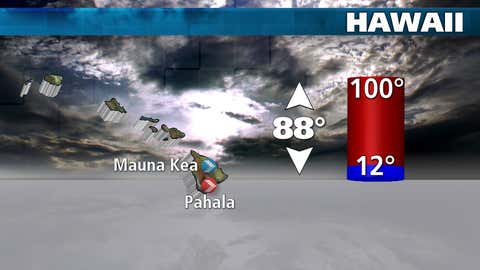
At a Glance
- Your car actually has a thermistor – not a thermometer.
- Car thermistors are a poor representation of the actual outside temperature.
- This is because the thermistor is exposed to re-radiated heat from the road surface.
If you're looking for an accurate reading of the temperature outside, pay no attention to your car's thermometer.
On a warm summer day, it usually displays a temperature significantly higher than the actual temperature, and there are several reasons why. For starters, your car does not actually have a built-in thermometer. Sure, the number "97" is right there on your dashboard, but that reading comes from a thermistor – not a thermometer.

Most commonly, the temperature is measured with a mercury thermometer. The liquid mercury inside the thermometer expands and rises to a certain value when heat is added, and contracts and falls to a lower value when heat is removed.
A thermistor, on the other hand, measures the change in electrical current as a result of heat added or removed. The problem is not with your car's thermistor itself; in fact, thermistors are typically accurate, not to mention small and cheap to make.
The real problem is where the thermistor is located on your car. Most automakers place the thermistor on the front of the car behind the grille. This location exposes the instrument's readings to re-radiated heat from the road surface.
If you've ever walked barefoot on the beach or on a blacktop on a sunny day, you likely felt the re-radiated heat directly as your feet burned on the hot surface.
(MORE: Here's How Often Your City Reaches 100 Degrees)
Roadways, or any blacktop for that matter, are great absorbers of incoming solar radiation. They heat up quickly, raising the temperature right at the surface, so temperatures over the blacktop are higher than over grassy or shaded surfaces.
Therefore, the temperature your car's thermistor is recording is the warmer temperature over the roadway, which has been heated by the sun. This can be 10-plus degrees warmer than the actual air temperature, which is measured about 6 and a half feet above a grassy surface, typically at an airport location.
This is the same reason bank signs usually display a value higher than the actual temperature – they are located over a blacktop parking lot, in most cases.
Case in point, take a look at this dashboard temperature from Bowie, Maryland, about 15 miles northeast of Washington D.C., late Tuesday afternoon.
Yes, it was hot in the D.C. area Tuesday, but it was certainly not 111 degrees. The high temperature at Reagan National Airport was 95 degrees mid-afternoon Tuesday. The temperature at 5 p.m. EDT, about the time the picture in the above tweet was taken, was 90 degrees.
That means the car's thermistor was measuring a temperature 21 degrees warmer than the actual temperature as the hot sun baked the road surface on which this car drove.
Car thermistors provide a better representation of nighttime temperatures, when the heating from the sun is lost. They are also more accurate on a cloudy day for the same reason, as well as when traveling at higher speeds and not sitting in standstill traffic.
(MORE: Summer 2017 Temperature Outlook)
While this inaccuracy is typically not a big deal, it can become problematic during the winter. A near-freezing temperature could mean the difference between wet roads and black ice, but if your car is telling you it's 34 degrees, it may actually be at or below freezing.
If you're unsure, take it slow on the roads. It's better to be safe than risk sliding on the icy roadway. And if you're interested in seeing the actual air temperature, you can download our app and find it at your fingertips.
Brian Donegan is a digital meteorologist at weather.com. Follow him on Facebook and Twitter.
MORE ON WEATHER.COM: Largest Temperature Swings in Each State




